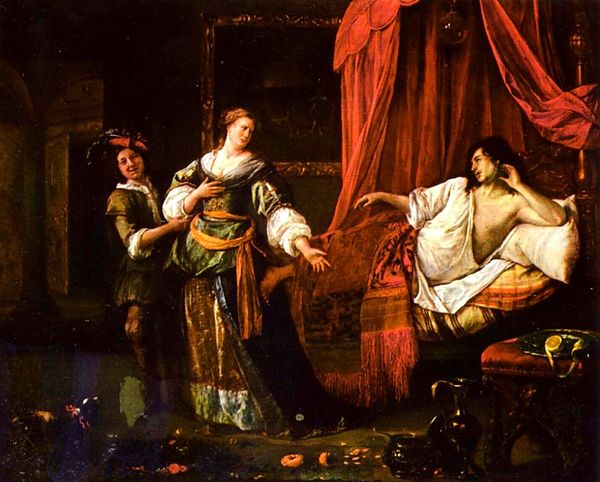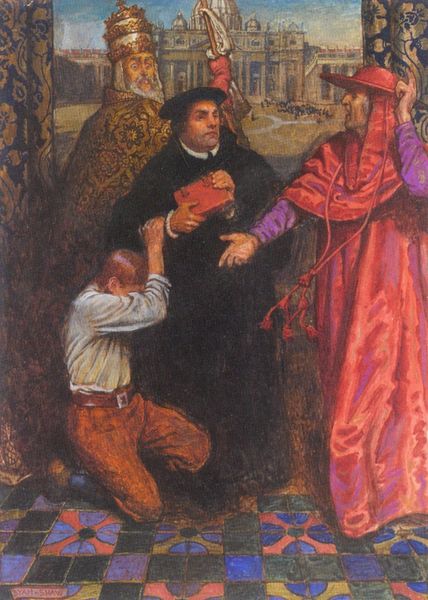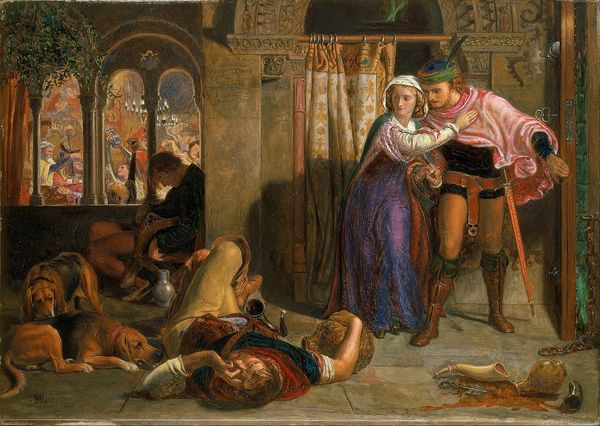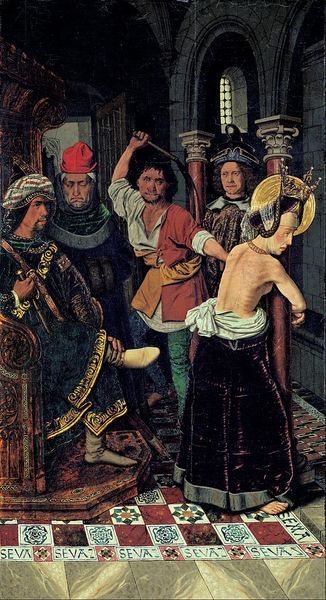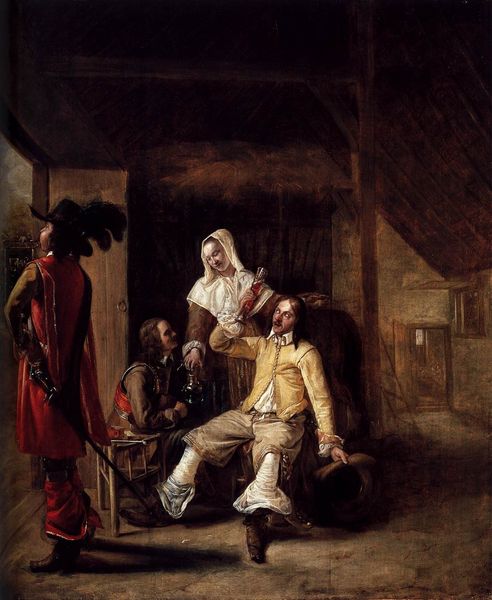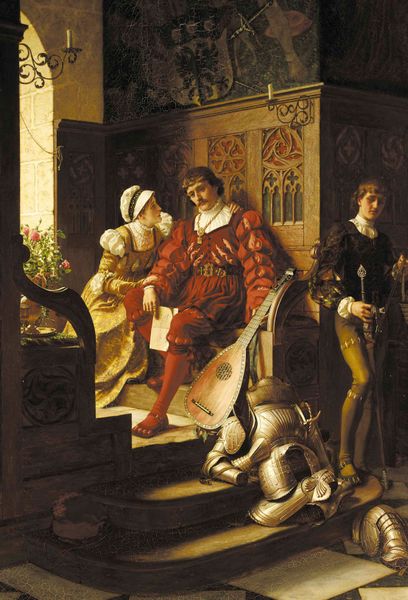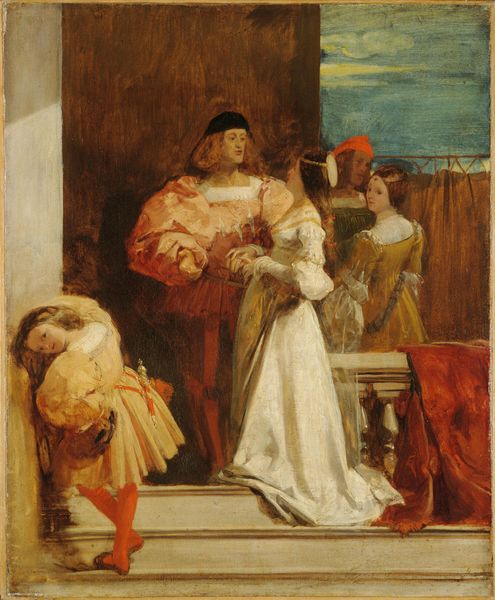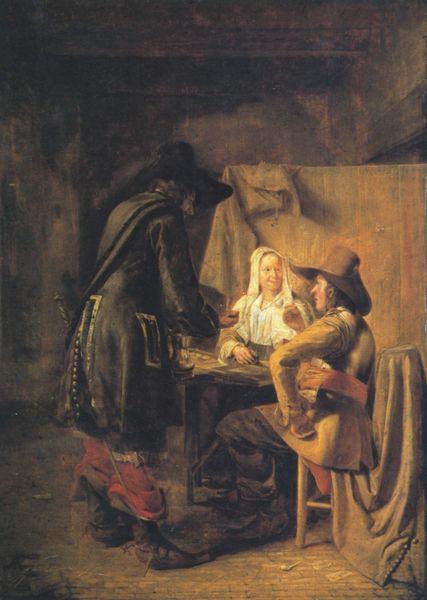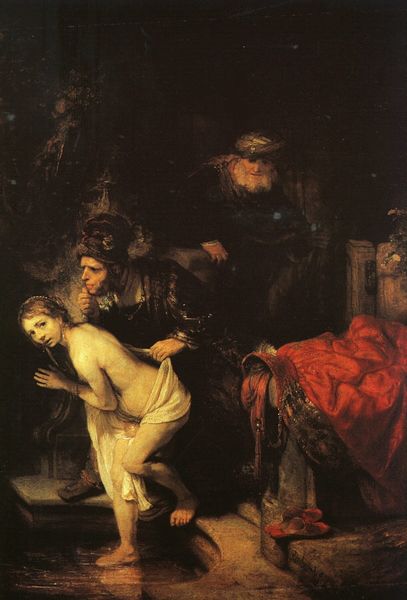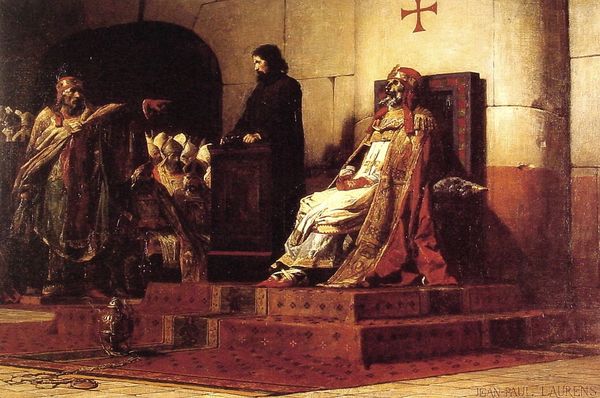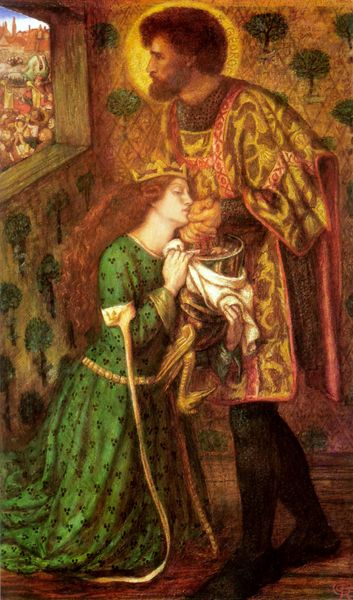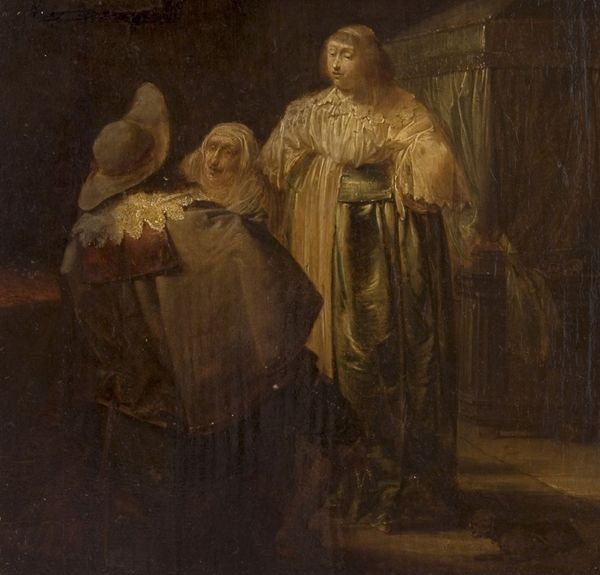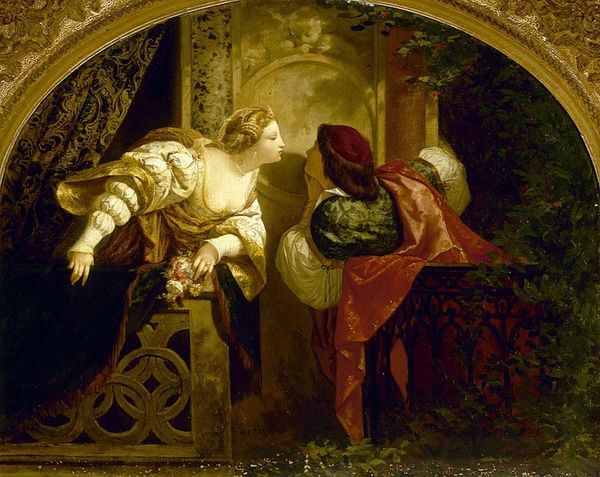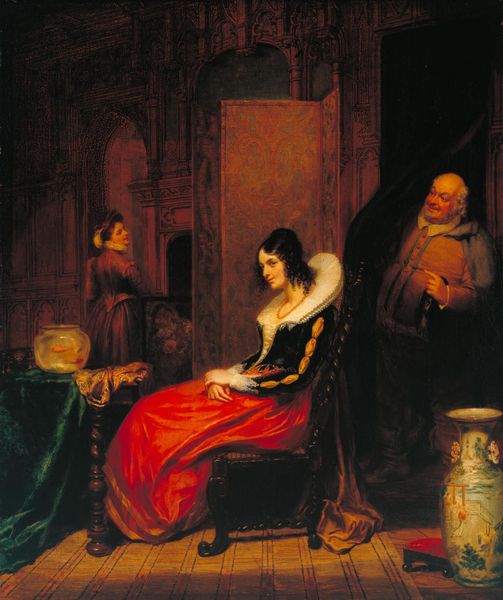
painting, oil-paint
#
portrait
#
narrative-art
#
painting
#
oil-paint
#
figuration
#
oil painting
#
neo expressionist
#
group-portraits
#
romanticism
#
history-painting
#
portrait art
Copyright: Public domain
Editor: Let's delve into Millais's "St. Bartholomew's Day," an oil painting held in a private collection, depicting what appears to be a tense, historical encounter. I'm immediately struck by the woman's desperate expression and the heavy, almost theatrical atmosphere. What can you tell us about this dramatic scene? Curator: Ah, yes, drama indeed. Millais always had a knack for narrative, didn't he? What grabs me isn’t just the woman’s plea, but the almost ambivalent look in the soldier’s eyes. Does he look cruel, or conflicted, or even a bit tired? Perhaps, we're not witnessing pure villainy but rather the heavy weight of duty mixed with human feeling. Editor: That's an interesting take. I hadn’t considered the soldier's possible inner conflict. Is this ambiguity characteristic of history paintings from this period? Curator: Ambiguity, you say? Yes, well…history, my dear, isn't usually etched in stark black and white. Millais, belonging to the Pre-Raphaelite brotherhood, sought truth through detail, but also recognized nuance in human stories. The small crucifix on the soldier's hat, the bunch of flowers...all symbols adding subtle notes to a cacophony of conflict. Editor: So the Pre-Raphaelites weren't just about beautiful aesthetics? Curator: Beauty, yes, but they chased beauty with depth. Their aim was to paint from nature, true enough, but with the symbolic heft of the Old Masters. Do you notice the muted color palette? The almost oppressive darkness that heightens the emotion? It’s like they're trying to pull us into a pivotal moment and whisper secrets. Editor: The lighting definitely adds to that sense of unease. It feels like we're intruding on something incredibly personal. Curator: Precisely. Art at its best is an invitation. Millais wanted to evoke strong emotional reaction from its viewers by letting them use their own historical context, injecting some truth in their time, no matter how raw it seems to be. Editor: I never considered history paintings as being so... open to interpretation. Curator: The trick is to allow it to linger with us for days, as history, after all, always does. The Pre-Raphaelites simply gave it colour and drama!
Comments
No comments
Be the first to comment and join the conversation on the ultimate creative platform.
